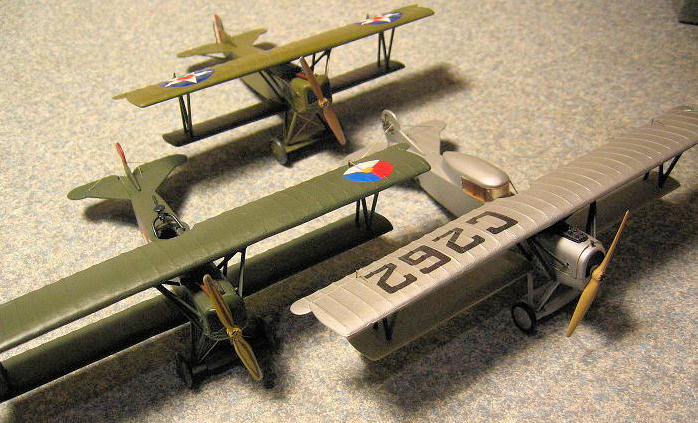
Revell 1/72 Fokker D.
| KIT #: | H-71 or H-380 |
| PRICE: | Last reissue was $6.00 |
| DECALS: | Three options |
| REVIEWER: | Brian R. Baker |
| NOTES: | Old kit, but Lots of Possibilities |

| HISTORY |
Anyone familiar with World War I should be aware of the fact that
Fokkerís D.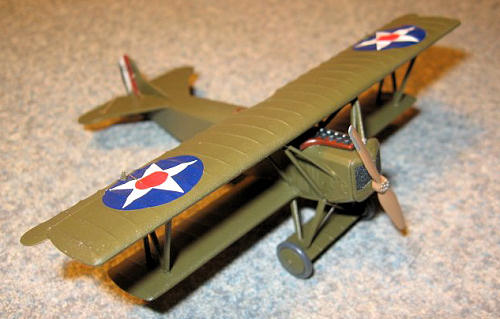 speed.
Even inexperienced pilots could do well with the type, and its
reputation was such that when the armistice agreement was dictated to
the Germans, one provision called for the surrender of all military
aircraft, especially all Fokker D.
speed.
Even inexperienced pilots could do well with the type, and its
reputation was such that when the armistice agreement was dictated to
the Germans, one provision called for the surrender of all military
aircraft, especially all Fokker D.
Following the war, Fokker
managed to avoid the Alliesí Armistice Commission
and ship a large number of
airplanes and components back to his native
| THE KIT |
The
Revell Fokker D.
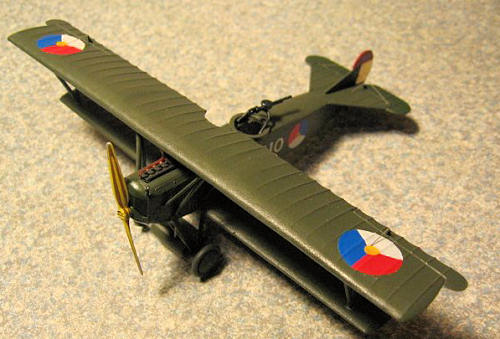 A
problem with the D.
A
problem with the D.
The kit has adequate detail, especially for its time, and consists of about 30 parts molded in either white, red, or some other color of styrene. Detail is a little heavy, and the fabric texture is somewhat overdone, but paint fills this in to a certain extent. There is some flash, and some of the parts need trimming, but this is not a serious problem. There is, however, no interior except for a couple of pegs in the fuselage interior, intended for a pilot to be seated. This is easy to remove, and building a cockpit interior is quite easy. In fact, this model would probably today be considered to be a quickbuild unless you want to do some serious detailing, in which such things as cockpit interior, control horns, and rigging wire should be added.
| CONSTRUCTION |
Construction will involve some serious filling and sanding, but it is a
very simple and uncomplicated kit, and the parts seem to fit quite well.
The wings and elevators line up perfectly, and the struts are
easy to install so that the upper wing sits at the correct angle.
In short, assembly is not a problem, although the kit shows its
age, and certainly is not up to the standard of the newer
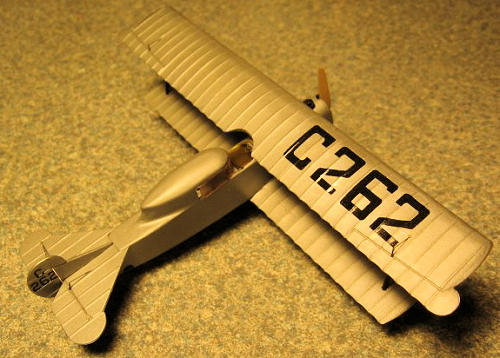 Roden
kits. One advantage of this kit is that the wings were actually
cantilever, so they didnít have the rigging that most biplanes of that
era had. The only wires on
this kit are the tailbraces, landing gear braces, and the control
cables. Youíll spend all of
twenty minutes rigging this baby, unusual for World War I airplanes.
Roden
kits. One advantage of this kit is that the wings were actually
cantilever, so they didnít have the rigging that most biplanes of that
era had. The only wires on
this kit are the tailbraces, landing gear braces, and the control
cables. Youíll spend all of
twenty minutes rigging this baby, unusual for World War I airplanes.
I
decided to do a U.S. Marine Corps unarmed D.
The C.1 Two Seater.
This model has an interesting story.
About 35 years ago, I ran across a photo of a Fokker biplane that
I couldnít identify. It was
taken about 1925 around the Detroit area, and was a two seat cabin
biplane with an open cockpit for the pilot. The engine was a Hisso,
probably about 220 hp., with a round cowling rather than the angular one
used by the D.
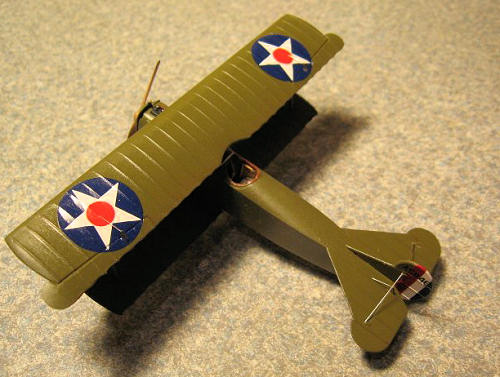 At
the same time, I also decided to do the C.1 two seat biplane, and since
some of them were operated by the Dutch Air Force, I did mine in Dutch
markings. However, I was
never satisfied with the model, so I eventually relegated it to my scrap
models box, probably to be forgotten forever.
But this was not to be. Not
long ago, I was scrounging through the box for parts for another
conversion, and ran across the old Fokker model.
I decided that it was time to update the old model and give it
its rightful place in my model display case, so I knocked the kit apart,
and began rebuilding it. I
added a simple interior, smoothed out the imperfections created by my
limited modeling skills of 35 years ago, and went to work.
I replaced the struts from parts from another D.
At
the same time, I also decided to do the C.1 two seat biplane, and since
some of them were operated by the Dutch Air Force, I did mine in Dutch
markings. However, I was
never satisfied with the model, so I eventually relegated it to my scrap
models box, probably to be forgotten forever.
But this was not to be. Not
long ago, I was scrounging through the box for parts for another
conversion, and ran across the old Fokker model.
I decided that it was time to update the old model and give it
its rightful place in my model display case, so I knocked the kit apart,
and began rebuilding it. I
added a simple interior, smoothed out the imperfections created by my
limited modeling skills of 35 years ago, and went to work.
I replaced the struts from parts from another D.
The C.II
The C.II was done just like the C.1, except that the rear canopy cover and the Hisso cowling had to be vacuformed. The aircraft was silver overall, with black numbers. I had to make my own drawings, as at the time, I hadnít seen a three view of this aircraft, only the C.1.
| CONCLUSIONS |
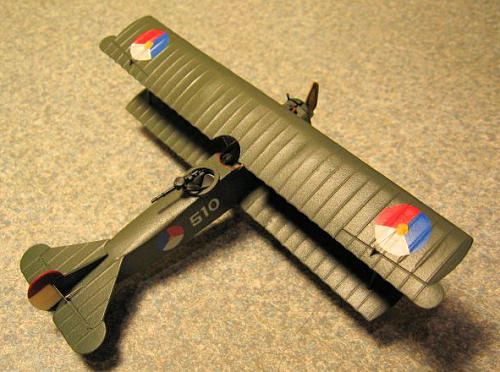 I
know that the Roden kit is infinitely better than the old Revell
offering, but I donít think thatís the point.
I still have half a dozen Revell kits, and with a little work,
they can be made into acceptable models.
In addition, they are very cheap, which is always nice in an age
of styrene inflation. They
are certainly buildable, and can be done quickly. And think of the many
variations in form and color that can be done from this kit.
There were numerous prototypes, and quite a number of variants
which were basically a D.
I
know that the Roden kit is infinitely better than the old Revell
offering, but I donít think thatís the point.
I still have half a dozen Revell kits, and with a little work,
they can be made into acceptable models.
In addition, they are very cheap, which is always nice in an age
of styrene inflation. They
are certainly buildable, and can be done quickly. And think of the many
variations in form and color that can be done from this kit.
There were numerous prototypes, and quite a number of variants
which were basically a D.
| REFERENCES |
There is a lot of information available on the Fokker D.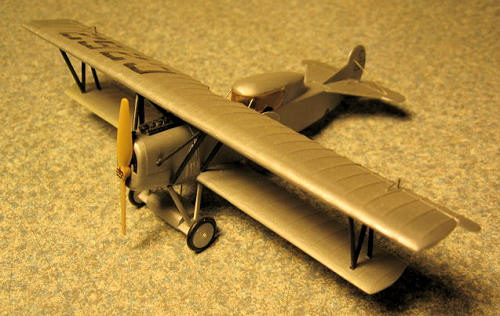 seen
the reviews and need to get one.
seen
the reviews and need to get one.
October 2010
Copyright ModelingMadness.com. All rights reserved. No reproduction in part or in whole without express permission.
If you would like your product reviewed fairly and quickly, please contact me or see other details in the Note to Contributors.